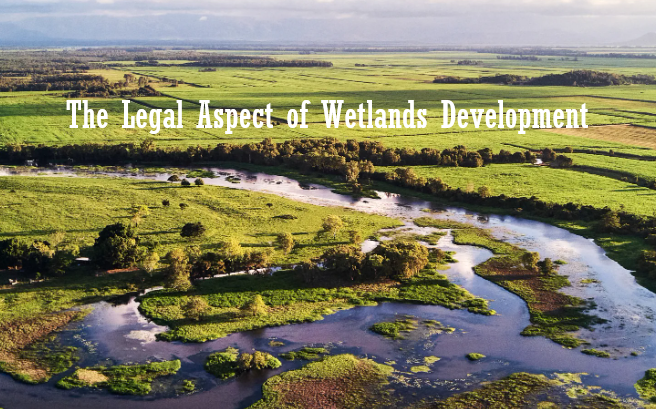Building on Shifting Ground: The Legal Aspect of Wetlands Development

In recent years, wetland development has become quite popular among real estate developers.
The reason behind this is marshes, swamps, bogs, and fens – places teeming with life and offering services we often take for granted. Not to mention, they are also the frontline defense against flooding while keeping the water clean.
However, it’s not all good—there is another side to this story. The push for development is posing a threat to these areas. It calls for awareness about “legal aspects” associated with development projects.
To be more specific, the Clean Water Act provides a baseline of protection for wetlands across the United States. Some states and local governments might even have stricter regulations.
So, understanding and adhering to these laws is important for developers, environmentalists, and property owners. With this idea in mind, we’ll share the different legalities that you must know while developing a wetland below.
Key Federal Laws and Regulations
There are various laws and regulations that build the foundation of wetland protection across the country. Some of them are as follows:
Endangered Species Act
The wetlands are bustling ecosystems, home to a wide array of wildlife, including species that are threatened or on the brink of extinction. The Endangered Species Act steps in here, protecting these vulnerable plants and animals and their crucial habitats.
But what does it mean for real estate development? Well, in a situation where a project plan has the potential to harm the wetlands and its species in any way, the plan will need a thorough review and possibly some significant adjustments.
That’s why it’s crucial to have a good understanding of the wetlands near your development site. A simple online search for “Wetlands Near Me” or reaching out to experts can set you on the right path. These experts evaluate how your project could affect the environment and compile a comprehensive report.
This includes potential concerns, the environmental impact, and what permits you’ll need (using the data from the USGS National Hydrography Dataset and other key resources.)
Clean Water Act (Section 404)
At the heart of protecting the wetlands in the U.S. is the Clean Water Act, and more specifically, Section 404. According to this act, developers need special permits for activities that involve depositing material into these areas. These fall under the act’s “Waters of the United States.”
It’s worth noting that this permit is not a simple sign-off. The Army Corps of Engineers takes a close look, with the Environmental Protection Agency (EPA) also weighing in. They assess the potential environmental impacts and ways to minimize damage.
National Environmental Policy Act (NEPA)
The next is the National Environmental Policy Act (NEPA), especially used for the big federal projects. It includes understanding how the project could lead to wetlands being lost or harmed.
What makes the act different is that it’s not a process that happens in the shadows. Everyone gets to have their say, allowing a wide range of voices to contribute to the conversation. This openness aims to ensure that decisions are made with eyes wide open, recognizing the true value of wetlands and the impact losing them could have.
In short, by taking a look at the bigger picture — including how the public feels — the EIS process keep us informed and also educate the public.
State and Local Regulations
Beyond the broad strokes painted by federal guidelines, the real details emerge at the state and local levels. Every state, and even municipalities within them, might see things a bit differently. They define what a protected wetland means in their own terms, sometimes casting a wider net than federal regulations.
In some places, the state takes charge of managing permits for any work that might touch these sensitive areas. This means developers have one more box to check in their quest to get projects off the ground.
But it doesn’t end with state laws. Step into any town or city, and you’ll find local zoning laws waiting with their own set of rules. In fact, some areas are marked as wetland conservation zones, where development isn’t just regulated; it’s off the table.
By setting up buffer zones, these laws help keep the wetlands safe from the hustle and bustle of development. All these layers of local and state regulations add complexity, sure, so it’s important to learn about them before moving forward with any project near such areas.
To Sum It All Up
The rules around building on wetland areas really underline how much developers need to work to make smart choices. Yes, there’s a big push to develop land, but it’s also vital to figure out how to do this without losing these valuable wetlands. This could mean teaming up with groups, staying up to date with laws about conserving nature, and even using due diligence software.




